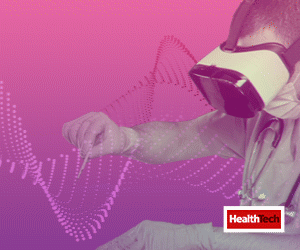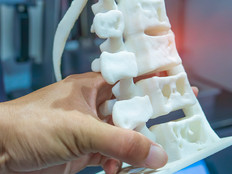Once clinicians assessed the virtual images to further guide care delivery, they made them public to send a message about the disease’s severe physical toll.
The project underscores the growing versatility of VR solutions in medicine. Although applications such as surgical training remain critical — especially as classrooms and clinical spaces remain affected by the pandemic — the technology is gaining traction as an educational tool at medical schools and healthcare organizations.
Creative uses of VR tend to offer more than just immersive versions of anatomy textbooks, says Dr. Warren Wiechmann, associate dean of clinical science education and educational technology at the University of California, Irvine School of Medicine.
“I really think that what is going to make VR stick is the ability to do things you couldn’t normally do in other modalities,” Wiechmann says. “I like this idea of putting yourself in scenarios you normally couldn’t be in to increase training and increase exposure.”
Shifting the Focus to Medical Education
At GW Hospital, clinicians and researchers have reconfigured the scans of 27 COVID-19 patients in virtual reality and looked at them alongside lab work. They found a correlation between lung damage and certain elevated lab values, which were also correlated with patient outcomes.
Although this is a clinical and research use case, it demonstrates the potential for the technology to accelerate learning, Mortman says.
“This has everything to do with medical education,” he says. “It’s a tool I’ve used primarily for patient education, and then we’ve adapted it for this new use. This raises a question: What can we learn from this, just by using the technology for a different reason?”
The uses are many. At the University of Washington in Seattle, clinicians and researchers have deployed VR to teach mindfulness strategies to patients. Wearing VR headsets, patients can imagine themselves floating down a river, and they’re given instructions about where to train their focus.
Such immersion, says Hunter Hoffman, director of the VR Analgesia Research Center at the university’s Human Photonics Lab, makes it easier for patients to stay focused — a value that could translate to many facets of a lab or classroom.
“The nice thing about VR is that you’ve already captured the user’s attention,” Hoffman says. “Virtual reality is very attention-grabbing, and I think it lends itself to medical training. Attention and memory are closely related.”
On the flip side, the technology has potential to educate patients and reduce anxiety before major procedures. A VR app, Hoffman notes, could allow users to virtually experience preparations for the surgical process, offering a particular benefit to individuals who have attention deficit disorders or anxiety.













